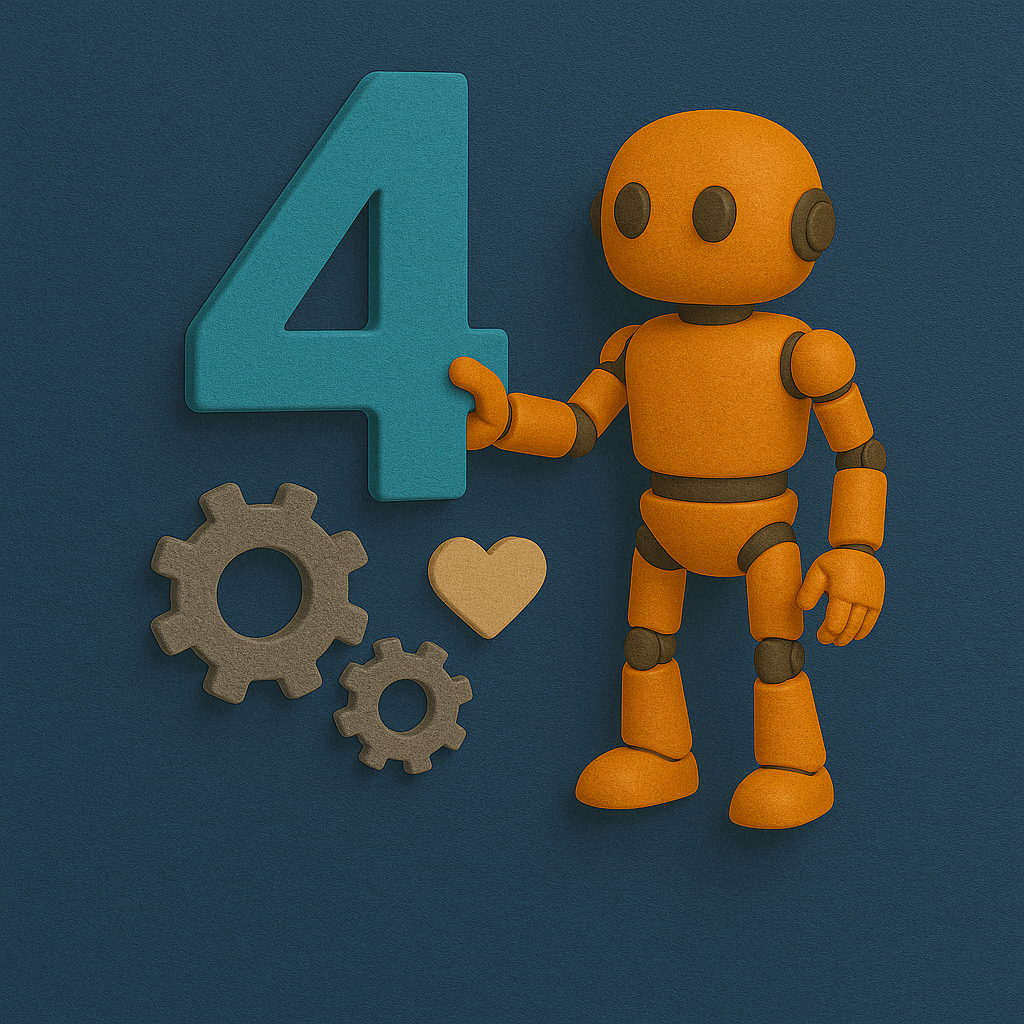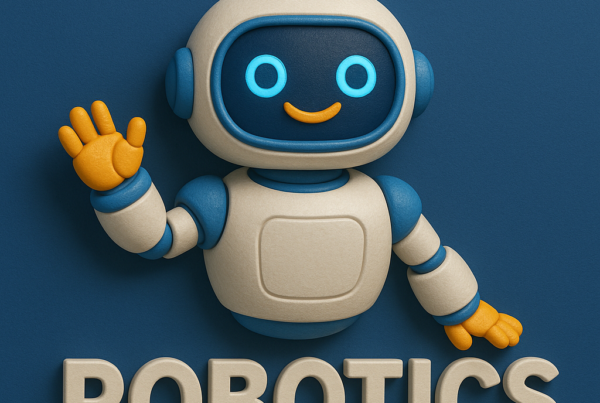Industry 4.0: The Rise of Cyber-Physical Intelligence
A Historical and Strategic Foundation Within the MIPP Collaborative
Transitioned Through MIPP Hubs Into Ethical, Inclusive, and Regenerative Systems
Introduction: Automation, Integration, and the Edge of Overreach
Industry 4.0 marked a profound leap in the evolution of global industry. Characterized by the integration of cyber-physical systems, artificial intelligence, robotics, IoT (Internet of Things), and big data analytics, this phase enabled real-time, interconnected, intelligent manufacturing and service delivery on a scale previously unimaginable.
At its peak, Industry 4.0 enabled unprecedented productivity, precision, and speed. However, it also exposed and amplified deep systemic vulnerabilities:
- Increased inequality due to labor automation
- Massive energy demands and rising e-waste
- Tech monopolies consolidating power
- Disconnection from local resilience and cultural nuance
- Blind acceleration without shared ethical frameworks
While Industry 4.0 delivered smarter systems, it often failed to deliver wiser outcomes. It created the technical conditions necessary for transformation—but not the ethical infrastructure. That responsibility now falls to the MIPP Collaborative through the deliberate design of Industry 5.0–7.0.
The Fourth Industrial Revolution in Context
| Phase | Defining Technology | Primary Focus | Dominant Outcome |
|---|---|---|---|
| Industry 1.0 | Steam & Water | Mechanization | Labor replacement |
| Industry 2.0 | Electricity | Mass Production | Standardization |
| Industry 3.0 | Electronics & IT | Automation | Cost efficiency |
| Industry 4.0 | AI, IoT, Cyber-Physical Systems | Smart Integration | Hyper-efficiency, Predictive Control, Data Dominance |
| Industry 5.0 | Collaborative Intelligence | Human-centricity | Empowerment, dignity |
| Industry 6.0 | Neuro/Bio Integration | Human-system synthesis | Enhancement and ecosystem design |
| Industry 7.0 | Regenerative Intelligence | Planetary systems harmony | Restoration and resilience |
Pillars of Industry 4.0
1. Cyber-Physical Systems (CPS)
- Machines connected to the internet and able to communicate with each other autonomously.
- Physical processes monitored and controlled by digital twins.
- Enabled real-time monitoring, predictive maintenance, and remote operation.
2. Industrial Internet of Things (IIoT)
- Interconnected sensors embedded in machines, products, and infrastructure.
- Provided granular data streams for supply chain optimization, asset tracking, and efficiency gains.
3. Big Data and Predictive Analytics
- Large-scale data collection and machine learning used to optimize operations, forecast demand, and detect anomalies.
- Raised concerns over privacy, surveillance capitalism, and algorithmic bias.
4. Cloud and Edge Computing
- Scalable infrastructure to support distributed data processing, storage, and intelligent decision-making at the edge of networks.
- Enabled decentralized manufacturing ecosystems—but often lacked local governance control.
5. Smart Manufacturing and Logistics
- Adaptive, responsive, just-in-time production flows.
- Fully automated warehousing, distribution, and procurement.
- In some cases, eroded labor standards and human oversight.
Industry 4.0 Deployment Through the MIPP Hub Framework
While Industry 4.0 was largely centralized and corporatized in its original form, the MIPP Collaborative reclaims and redirects these technologies through its distributed, ethical infrastructure: the MIPP Hubs.
MIPP Hub Typologies and Adaptation of Industry 4.0 Capabilities
A. Mobile MIPP Hubs
- Integrate low-energy, AI-driven diagnostic and fabrication systems for remote deployment.
- Enable rural communities to participate in digital production and predictive agriculture with localized data sovereignty.
B. Anchor MIPP Hubs
- Serve as regional digitization centers combining robotics, AI, and local workforce development.
- Host cyber-physical labs reconfigured for collaborative, regenerative applications rather than extractive automation.
C. AR/VR MIPP Hubs
- Utilize immersive 4.0 technologies for workforce upskilling, product simulation, and digital twin education.
- Focus on behavioral training, bias detection, and safe AI integration.
D. Metaverse MIPP Hubs
- Provide real-time collaborative spaces to design, test, and govern Industry 4.0 infrastructures globally.
- Enable decentralized industrial governance and real-time consensus tracking on automated systems.
Key Reorientations by the MIPP Collaborative
Rather than abandon Industry 4.0, the MIPP Collaborative uses it as the technical substrate for human-planetary transformation.
What MIPP corrects:
- Centralized Control → Distributed Participation
Cyber-physical systems are transitioned into community-owned infrastructure. - Automation for Profit → Automation for Dignity
Technologies reduce suffering, not just labor costs. - Surveillance Capitalism → Regenerative Data Economies
Data collected through MIPP Hubs flows back to communities, enabling co-benefit design. - Productivity at Any Cost → Precision Within Planetary Boundaries
Digital optimization is governed by carbon, water, biodiversity, and equity metrics.
Mobilization Campaigns for Industry 4.0 Redesign
- “Digitize Without Displacement”: Training thousands of displaced workers in AI governance, machine training, and community-led robotics integration.
- “Smart Factories for Justice”: Retrofitting existing industrial zones into hubs of inclusive employment and ecologically adaptive design.
- “IoT for the Commons”: Deploying open-source, locally governed sensor networks for water, food, air, and transport management in under-served regions.
- “Data is a Human Right”: Establishing data trust frameworks and digital rights literacy across MIPP Hubs.
Industry 4.0 in Transition: Use Cases within MIPP
1. Real-Time Agricultural Intelligence
- Sensor-driven soil and climate data collected via Mobile MIPP Hubs informs regenerative farming decisions.
- Farmers retain data ownership and benefit from AI-driven forecasting tools.
2. Digital Twin Governance of Supply Chains
- Anchor MIPP Hubs simulate supply chain flows to track emissions, waste, and social risks in real time.
- Enables regenerative procurement and accountability for global buyers and local producers.
3. Autonomous Transport for Regenerative Economies
- Decentralized AI-controlled trikes and bikes used for last-mile regenerative service delivery (e.g., health, education, food, recycling).
4. Edge Intelligence for Energy Resilience
- Off-grid systems in Mobile Hubs powered by solar and controlled by local AI agents adjusting loads and storing surplus intelligently.
Measurement and Systemic Accountability
Industry 4.0 applications are now subjected to MIPP’s regenerative performance criteria, ensuring that legacy tech systems evolve with integrity:
- Z Outcomes: All smart systems must produce measurable net-positive effects across social, economic, and ecological domains.
- Care4Most Filters: Prioritize systems that support underserved groups, community ownership, and meaningful work creation.
- SDG Embeddedness: Every AI, IoT, or automation deployment must advance one or more Sustainable Development Goals.
- Ethical Verification: Technologies are audited through collaborative, multi-generational ethics boards convened through MIPP Hubs.
Conclusion: From Intelligent Systems to Intelligent Stewardship
Industry 4.0 gave us the tools. But it did not give us the vision.
It gave us sensors, robots, and algorithms. But not the purpose behind their use.
Now, through MIPP’s global infrastructure, we reclaim that purpose.
With Industry 4.0 retrofitted for equity, empowerment, and environmental healing, we lay the digital groundwork for Industry 5.0’s human awakening, Industry 6.0’s biological integration, and Industry 7.0’s planetary alignment.
Industry 4.0 is not the end. It is the technical starting point for a civilization that finally becomes conscious of its own systems.


